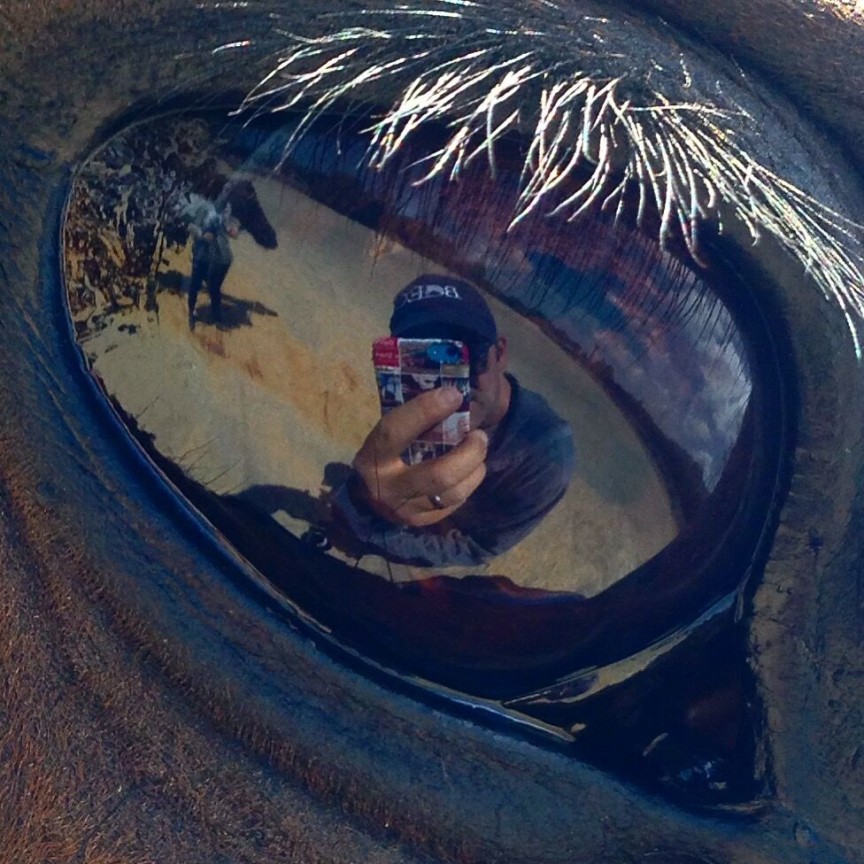How do horses see?
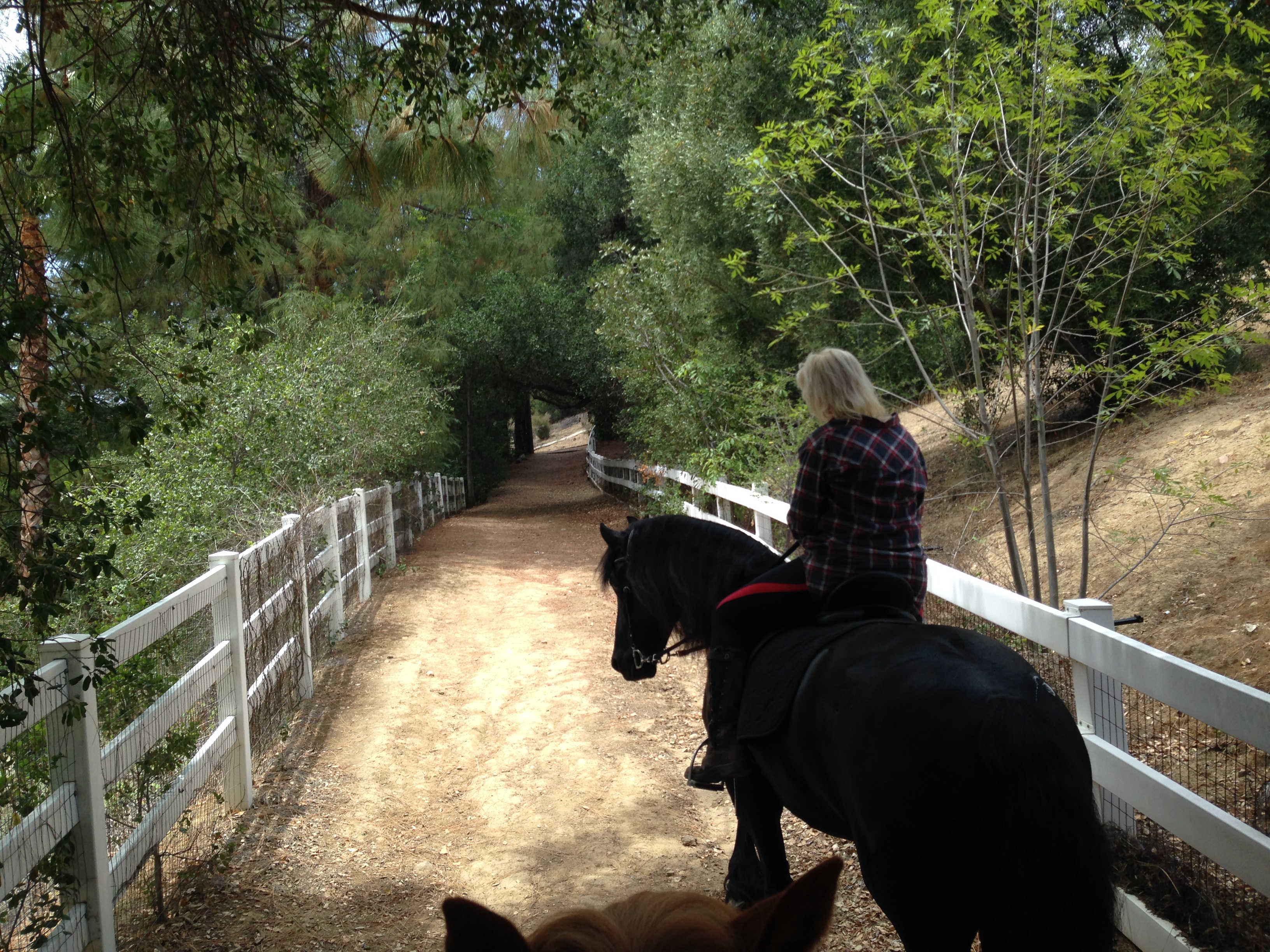
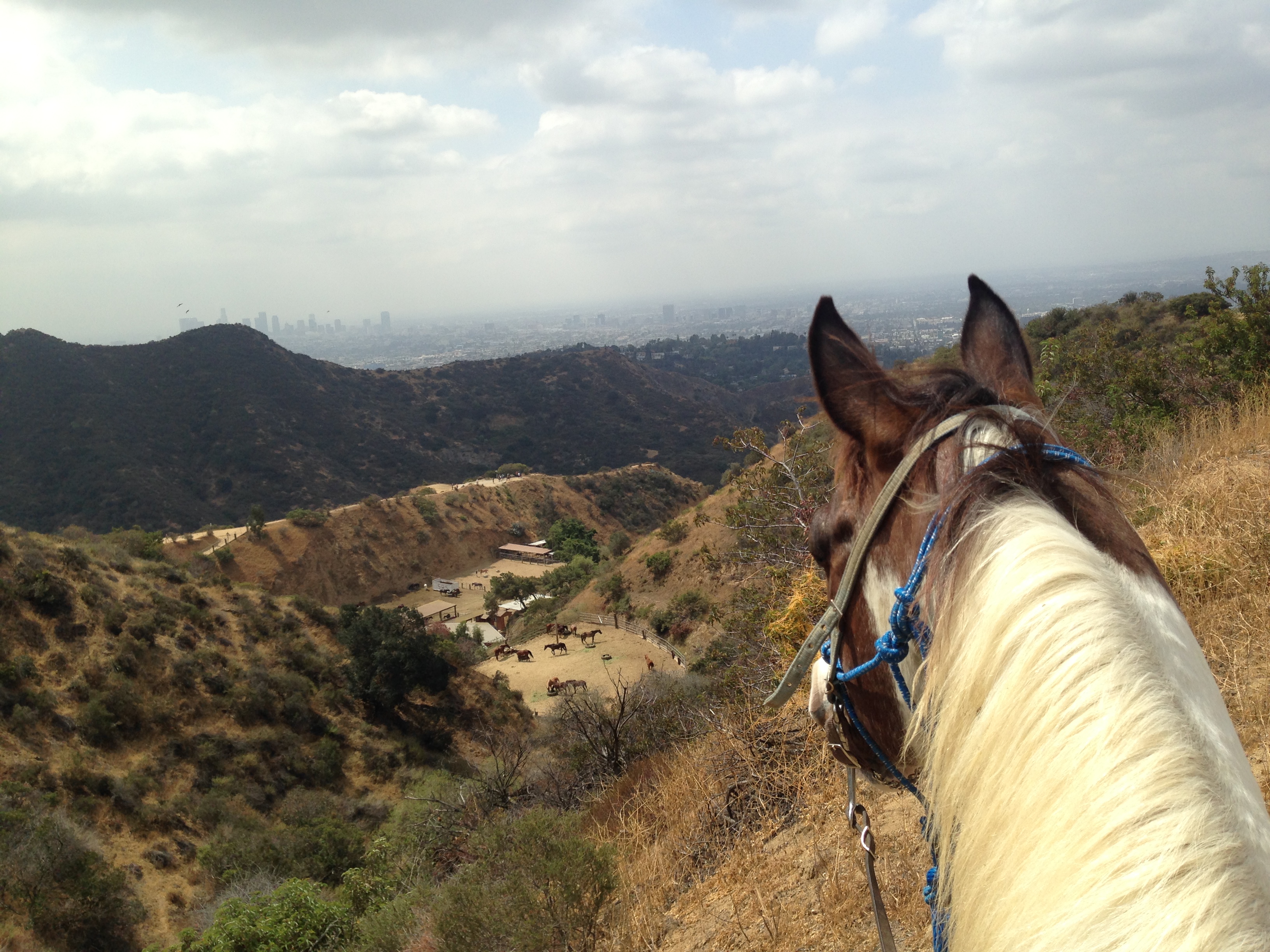
Tough question. The real answer is nobody really knows but we can make a good guess based on a few things we do know:
- Horses have a much wider field of view than humans. They can see almost all the way around themselves (~195 degrees per eye).
- Horses see out of each eye independently. Two monocular visioning eyes. Imagine that—two 195-degree fields of view. That’s a lot of information to process.
- Horses only have binocular vision if they look down the length of their face. Binocular vision is what makes depth perception possible—without it, it’s hard to tell how fast things are coming toward you. Kinda scary if you think about it.
- Horses can’t see the same range of colors we do. Think of them as someone who can only see blue and yellow.
- Horses can’t see the same amount of detail as we can; their vision isn’t “worse” like a nearsighted person’s, it’s just less detailed—think of the view as being grainier, rather than blurrier.
- Horses eyes are bigger, so they can collect more light and see a bit better in low light than humans.
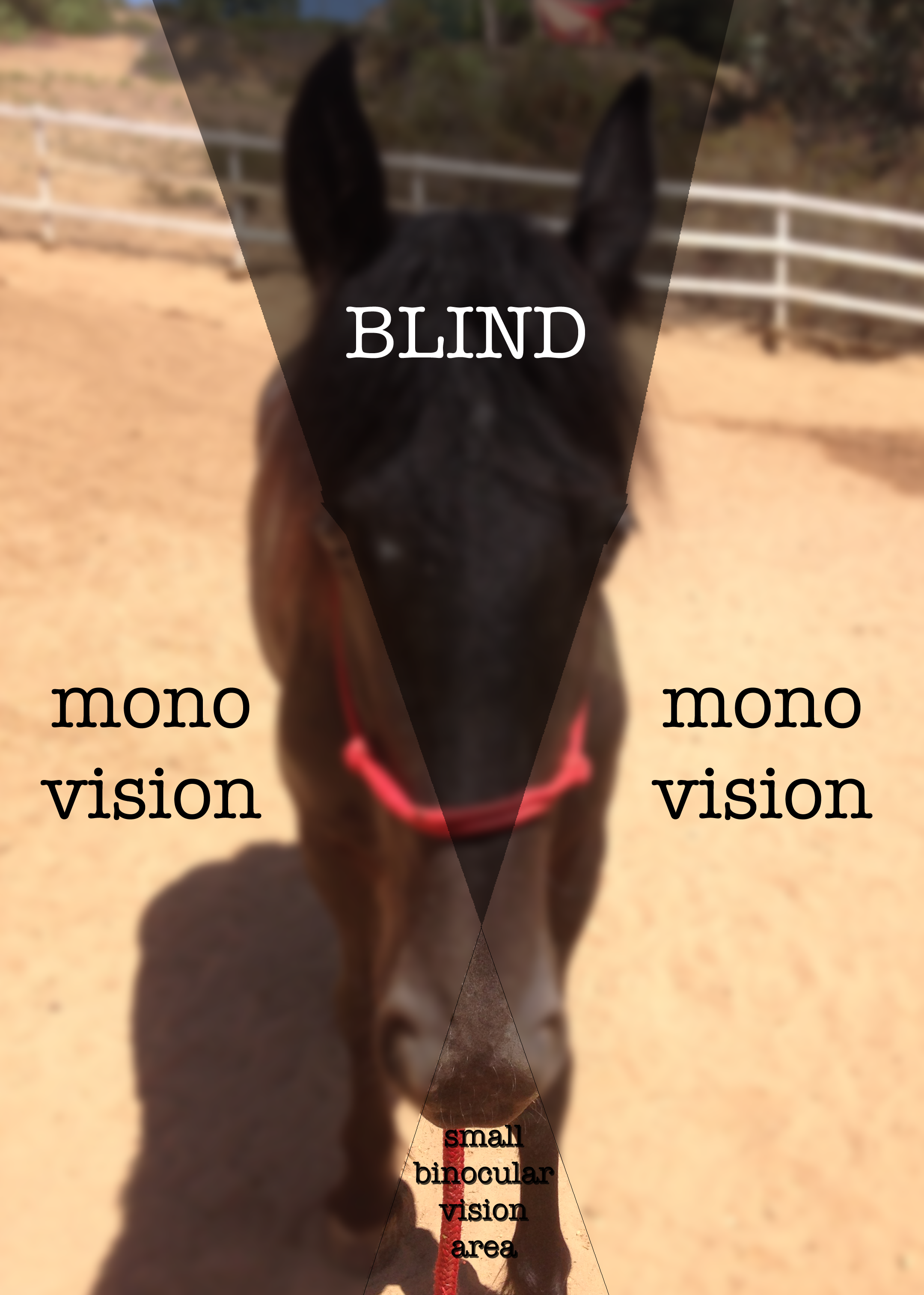
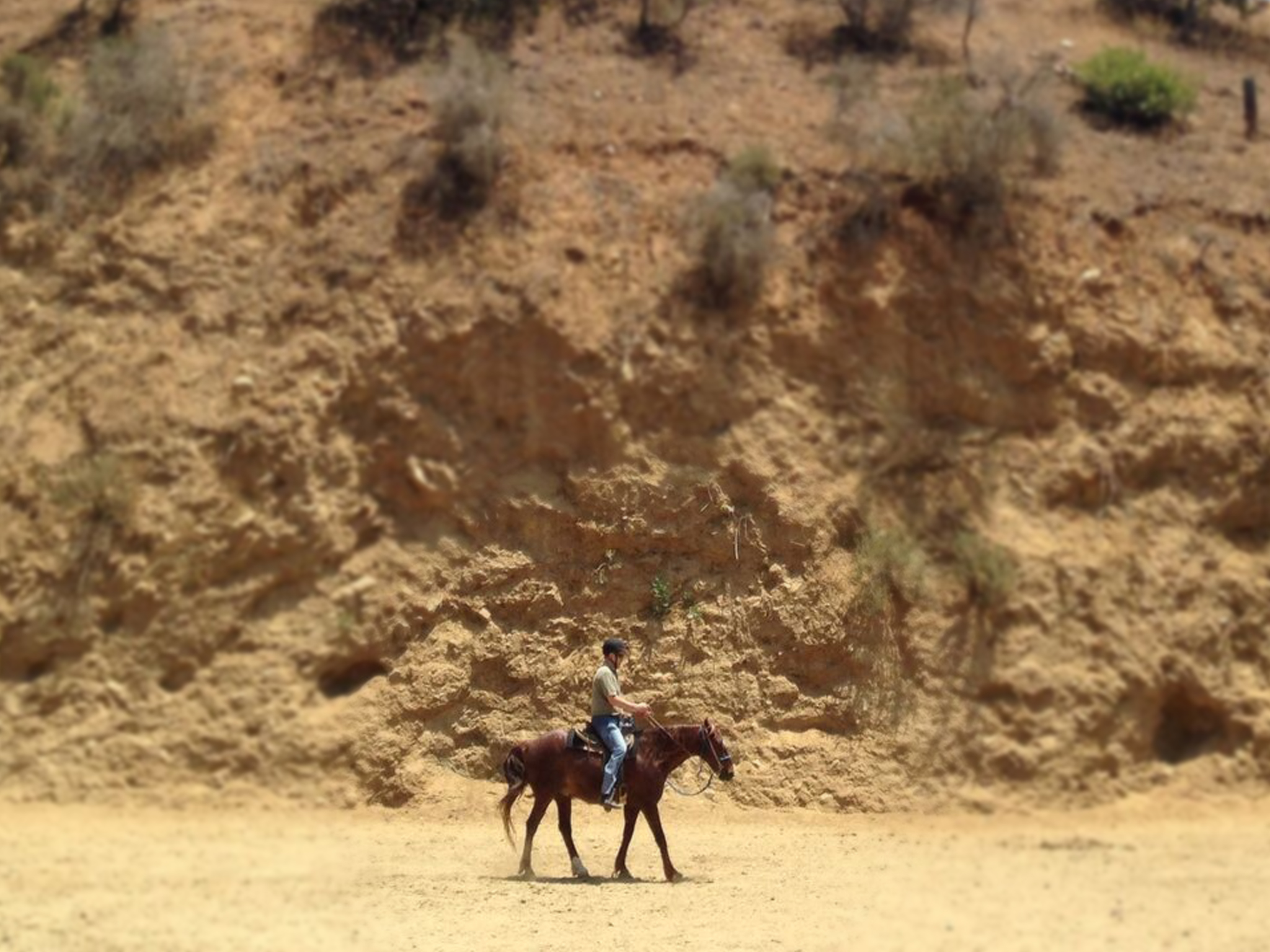
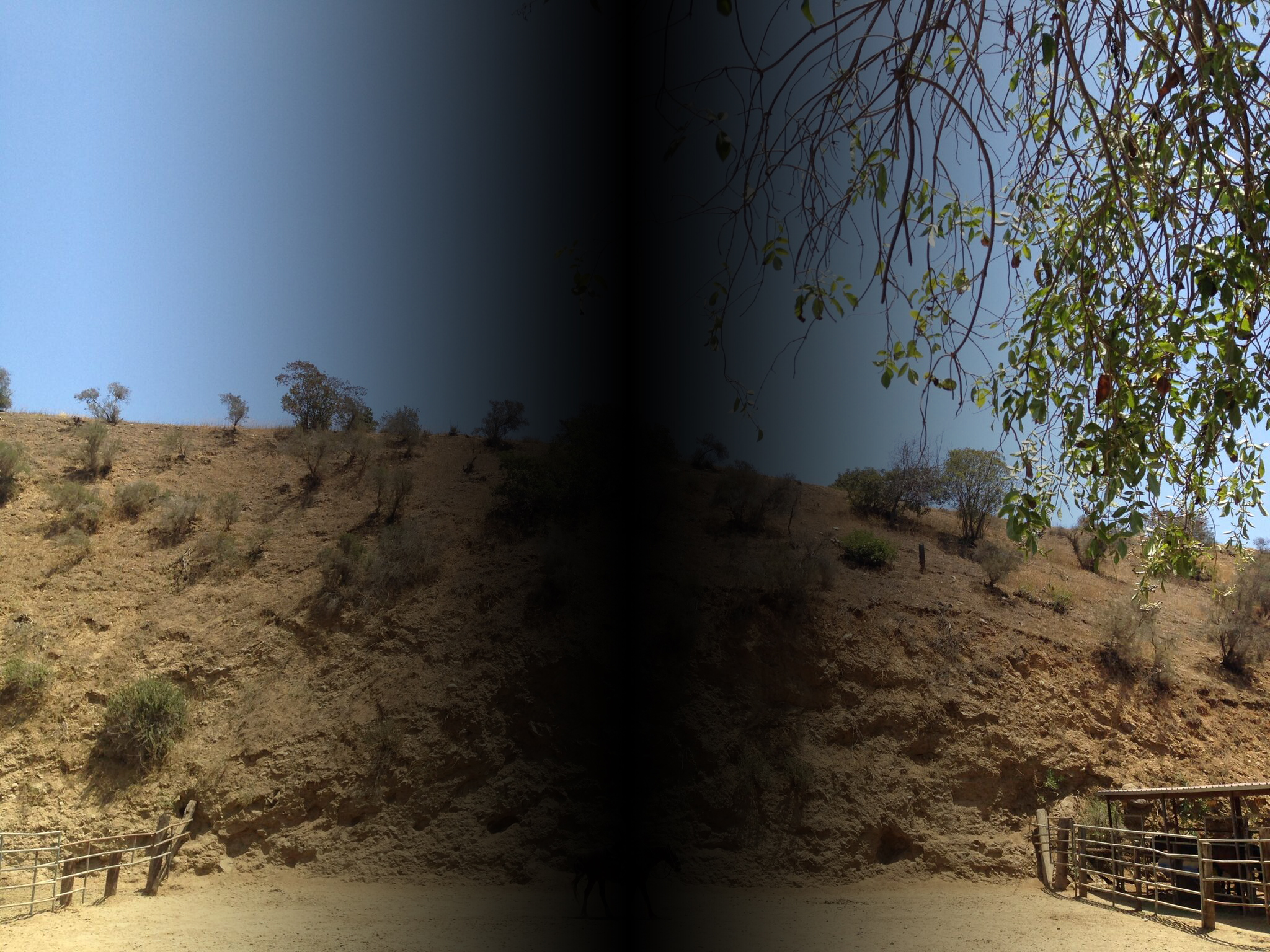
The human eye view is pretty narrow compared to a horse.
Horses have a wider field of view that humans but they have a blind spot in between their eyes.
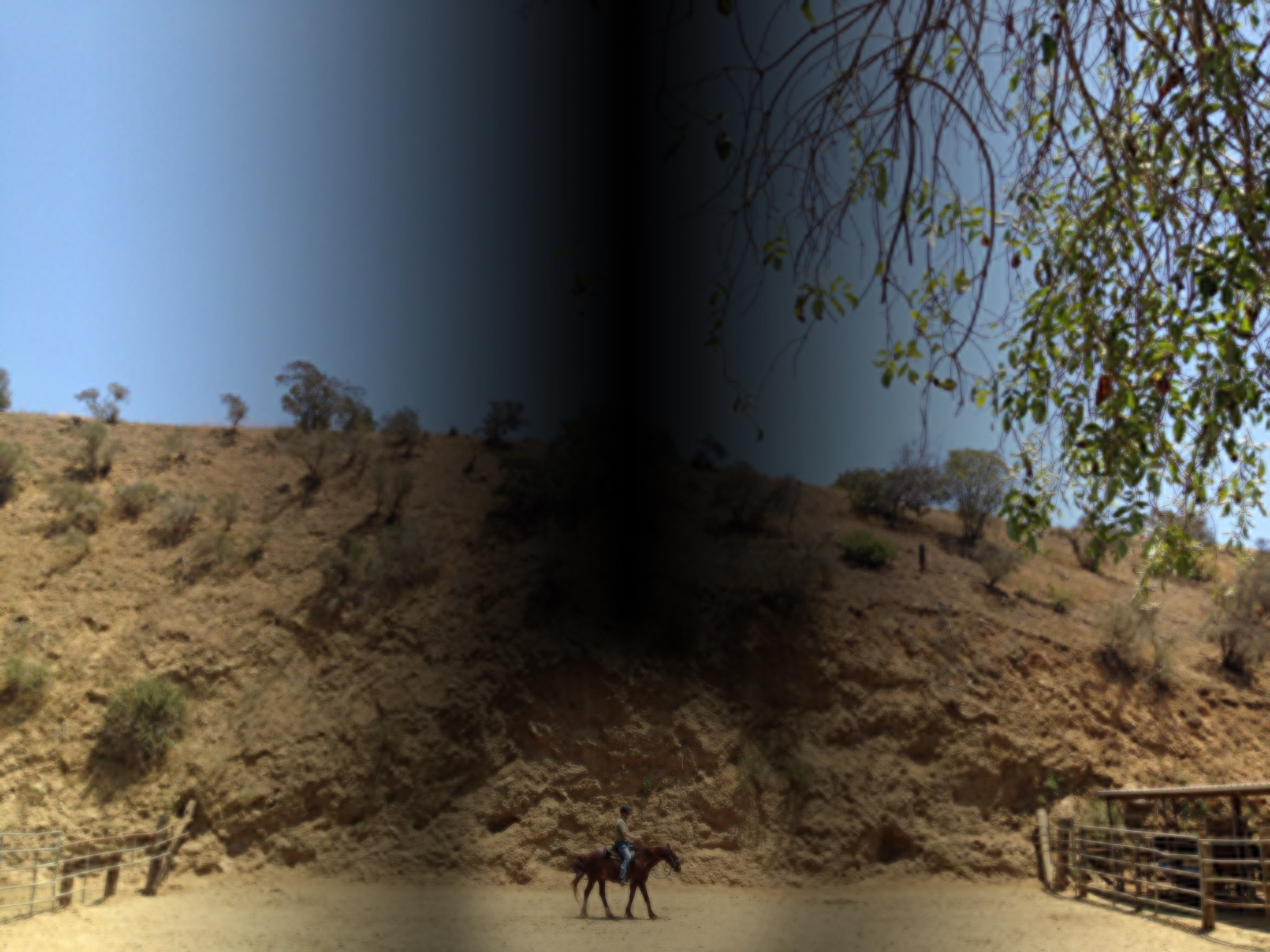
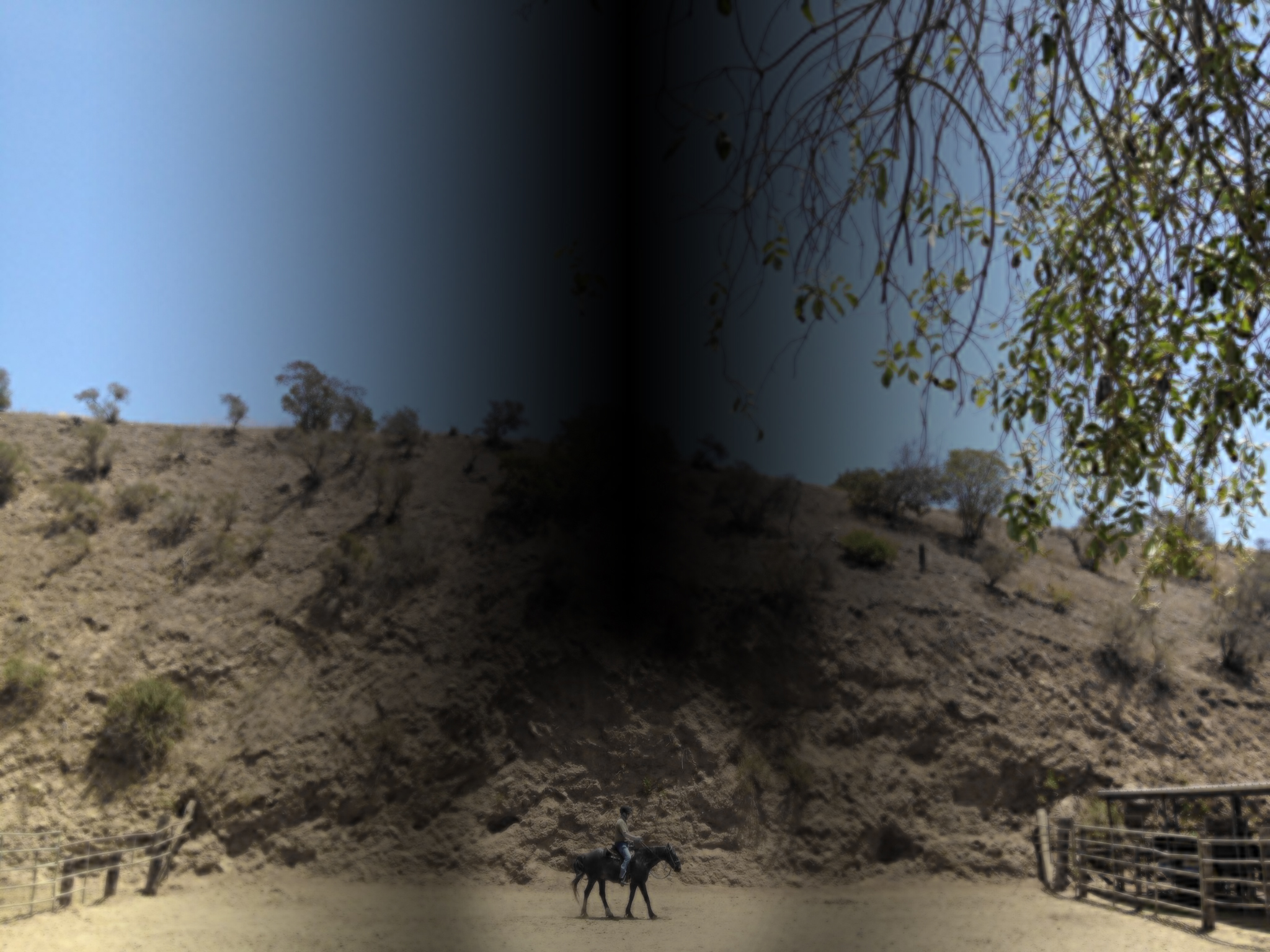
Because of the wider field of view they have a lower resolution than humans but when they raise their heads they have a small bit of binocular vision.
But they don’t see all the colors we see.
Now put all this together and it starts to become clear why horses can be a bit more skittish than humans. Not only are they inherently prone to being scared of things that might eat them, they can also see a very wide field of grainy blue/yellowish things waving all over the place in two separate eyes at the same time, even at night. If that’s the way I saw the world I’d be pretty skittish too.



